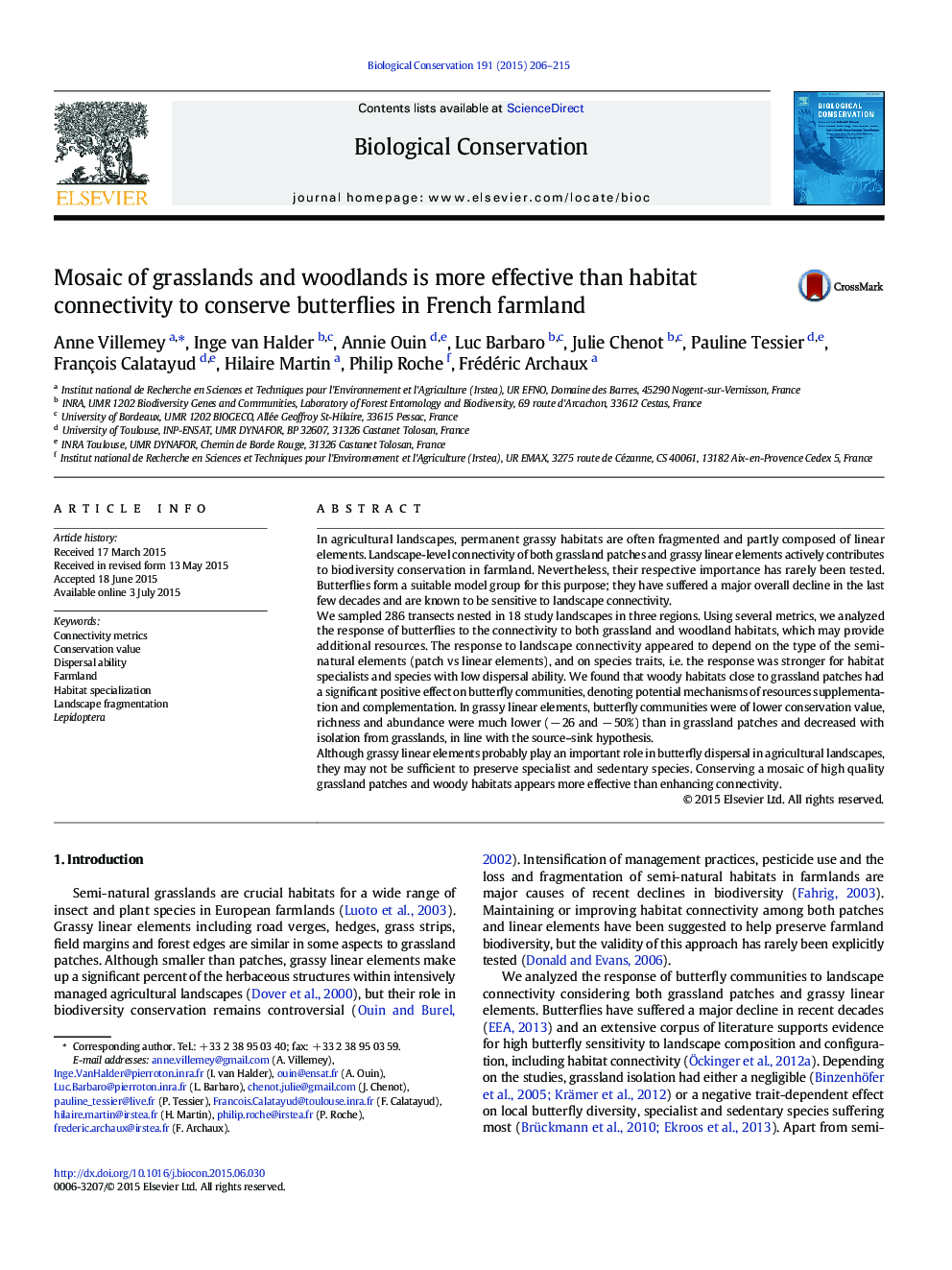| Article ID | Journal | Published Year | Pages | File Type |
|---|---|---|---|---|
| 6298942 | Biological Conservation | 2015 | 10 Pages |
â¢We sampled butterflies on 286 transects nested in 18 study landscapes in 3 regions.â¢Woodland connectivity increases diversity and conservation value in grassland patches.â¢Butterfly communities in linear elements benefit from proximity to grassland patches.â¢Specialists and sedentary butterfly species suffered the most from habitat isolation.â¢We recommend conserving mosaics of high-quality grasslands and woody habitats.
In agricultural landscapes, permanent grassy habitats are often fragmented and partly composed of linear elements. Landscape-level connectivity of both grassland patches and grassy linear elements actively contributes to biodiversity conservation in farmland. Nevertheless, their respective importance has rarely been tested. Butterflies form a suitable model group for this purpose; they have suffered a major overall decline in the last few decades and are known to be sensitive to landscape connectivity.We sampled 286 transects nested in 18 study landscapes in three regions. Using several metrics, we analyzed the response of butterflies to the connectivity to both grassland and woodland habitats, which may provide additional resources. The response to landscape connectivity appeared to depend on the type of the semi-natural elements (patch vs linear elements), and on species traits, i.e. the response was stronger for habitat specialists and species with low dispersal ability. We found that woody habitats close to grassland patches had a significant positive effect on butterfly communities, denoting potential mechanisms of resources supplementation and complementation. In grassy linear elements, butterfly communities were of lower conservation value, richness and abundance were much lower (â 26 and â 50%) than in grassland patches and decreased with isolation from grasslands, in line with the source-sink hypothesis.Although grassy linear elements probably play an important role in butterfly dispersal in agricultural landscapes, they may not be sufficient to preserve specialist and sedentary species. Conserving a mosaic of high quality grassland patches and woody habitats appears more effective than enhancing connectivity.
